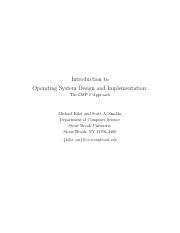What is Organic Solderability Preservative (OSP)?
OSP is a chemical coating applied to the exposed copper surfaces of a PCB to prevent oxidation and maintain solderability during storage and assembly. The coating is typically composed of organic compounds such as benzimidazoles, benzotriazoles, or imidazoles, which form a thin, transparent layer on the copper surface.
The primary functions of OSP are:
1. Protect the copper surface from oxidation
2. Enhance solderability during the assembly process
3. Provide a flat, uniform surface for improved contact with electronic components
Advantages of OSP as a Surface Finish
OSP offers several advantages over other surface finishes, making it a popular choice for many PCB manufacturers and electronics assemblers.
Cost-effectiveness
Compared to other surface finishes like ENIG or Immersion Silver, OSP is a more cost-effective solution. The materials and processing costs associated with OSP are lower, making it an attractive option for budget-conscious projects.
Environmental friendliness
OSP is considered an environmentally friendly surface finish as it does not contain lead or other harmful substances. The organic compounds used in OSP are biodegradable and do not pose a significant risk to the environment or human health.
Flat surface and improved contact
OSP provides a flat, uniform surface on the exposed copper, which enhances the contact between the PCB and electronic components. This improved contact can lead to better electrical performance and reliability of the assembLED PCB.
Compatibility with various soldering processes
OSP is compatible with a wide range of soldering processes, including wave soldering, reflow soldering, and hand soldering. This versatility makes OSP suitable for a variety of PCB Assembly applications.
The OSP Application Process
The OSP application process involves several steps to ensure a uniform and effective coating on the exposed copper surfaces.
-
Cleaning: The PCB is thoroughly cleaned to remove any contaminants, oxide layers, or residues from the copper surface.
-
Microetching: A microetching step is performed to roughen the copper surface slightly, improving the adhesion of the OSP coating.
-
OSP application: The PCB is immersed in an OSP solution, typically containing the organic compounds and other additives. The immersion time and temperature are carefully controlled to achieve the desired coating thickness and uniformity.
-
Drying: After the OSP application, the PCB is dried using hot air or an oven to remove any excess solution and ensure a stable coating.
-
Inspection: The coated PCB is inspected for coating thickness, uniformity, and the presence of any defects or contaminants.
The table below summarizes the typical OSP application process parameters:
| Process Step | Parameters |
|---|---|
| Cleaning | Alkaline or acid cleaners, 50-70°C, 2-5 minutes |
| Microetching | Persulfate or peroxide-based etchants, 25-35°C, 0.5-2 minutes |
| OSP application | OSP solution, 35-45°C, 1-3 minutes |
| Drying | Hot air or oven, 80-120°C, 5-15 minutes |

Factors to Consider When Selecting OSP
When choosing OSP as a surface finish for your PCB, there are several factors to consider to ensure optimal performance and reliability.
Shelf life and storage conditions
OSP-coated PCBs have a limited shelf life, typically ranging from 6 to 12 months, depending on the specific OSP formulation and storage conditions. It is essential to store OSP-coated PCBs in a controlled environment with low humidity and temperature to maximize their shelf life.
Assembly process compatibility
While OSP is compatible with most soldering processes, it is essential to consider the specific requirements of your assembly process. For example, if your assembly involves multiple reflow cycles or high-temperature processes, you may need to evaluate the Thermal stability of the OSP coating.
Coating thickness and uniformity
The thickness and uniformity of the OSP coating can affect the solderability and reliability of the assembled PCB. It is crucial to work with a reputable PCB manufacturer that can consistently produce OSP coatings with the desired thickness and uniformity.
Handling and contamination control
OSP-coated PCBs are sensitive to contamination, which can degrade the solderability and cause assembly issues. Proper handling procedures, such as using gloves and avoiding direct contact with the coated surfaces, should be followed to minimize the risk of contamination.
Frequently Asked Questions (FAQ)
-
Q: What is the typical thickness of an OSP coating?
A: The typical thickness of an OSP coating ranges from 0.2 to 0.5 microns (200 to 500 nanometers). -
Q: Can OSP be used for High-Frequency PCB applications?
A: Yes, OSP is suitable for high-frequency PCB Applications as it provides a flat, uniform surface that minimizes signal loss and distortion. -
Q: How does OSP compare to ENIG in terms of cost and performance?
A: OSP is generally more cost-effective than ENIG, but ENIG offers better durability, longer shelf life, and higher temperature resistance. The choice between OSP and ENIG depends on the specific requirements and budget of the project. -
Q: Is OSP suitable for PCBs with fine-pitch components?
A: Yes, OSP is suitable for PCBs with fine-pitch components as it provides a flat surface that facilitates accurate component placement and soldering. -
Q: Can OSP-coated PCBs be reworked or repaired?
A: Yes, OSP-coated PCBs can be reworked or repaired using standard soldering techniques. However, the rework process may remove the OSP coating, and the repaired area may require recoating to maintain solderability and protection.
In conclusion, Organic Solderability Preservative (OSP) is a cost-effective and environmentally friendly surface finish option for PCBs. Its ability to protect copper surfaces from oxidation, enhance solderability, and provide a flat surface for improved component contact makes it a popular choice for various PCB assembly applications. When selecting OSP, it is essential to consider factors such as shelf life, assembly process compatibility, coating thickness and uniformity, and handling requirements to ensure optimal performance and reliability of the assembled PCB.

No responses yet